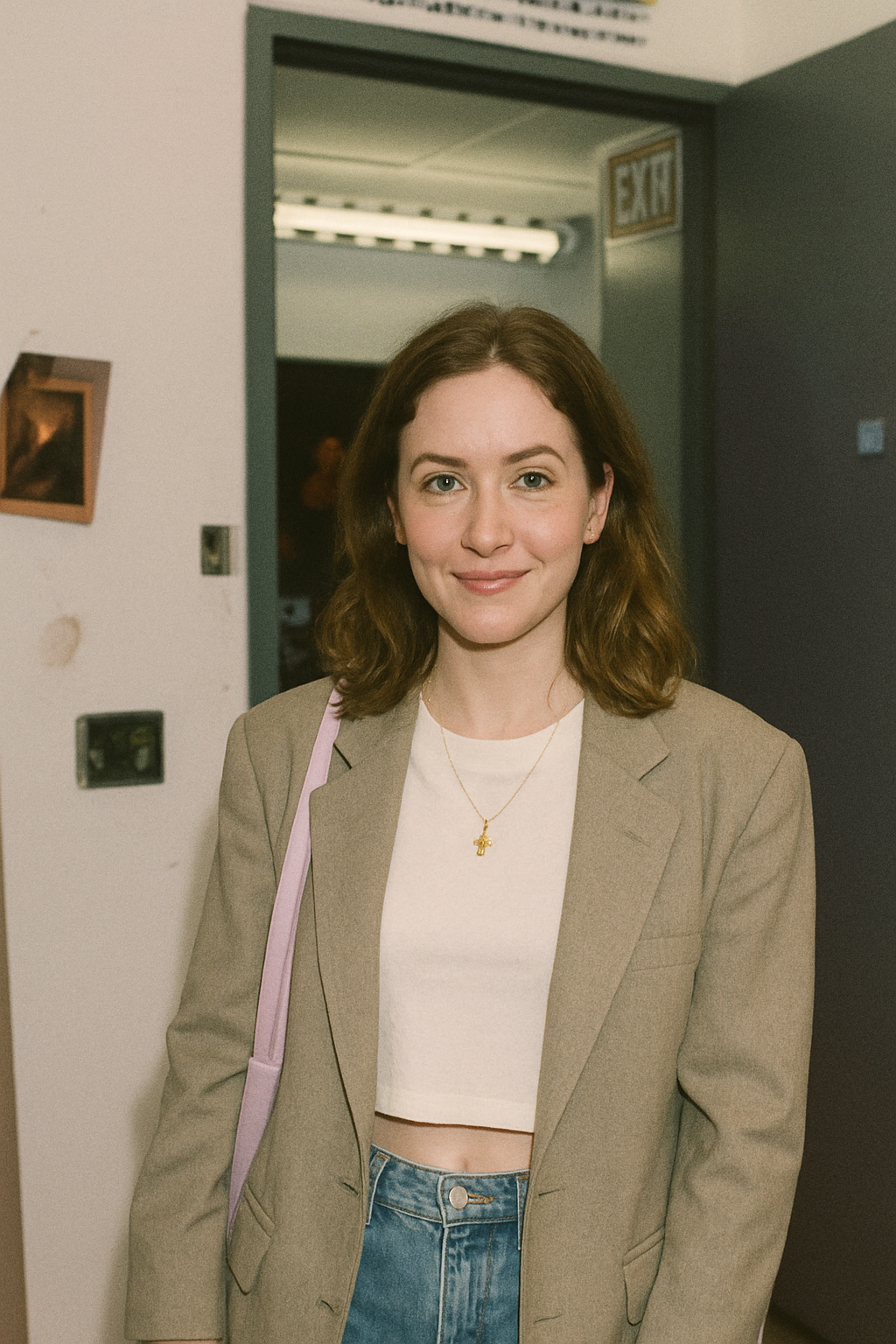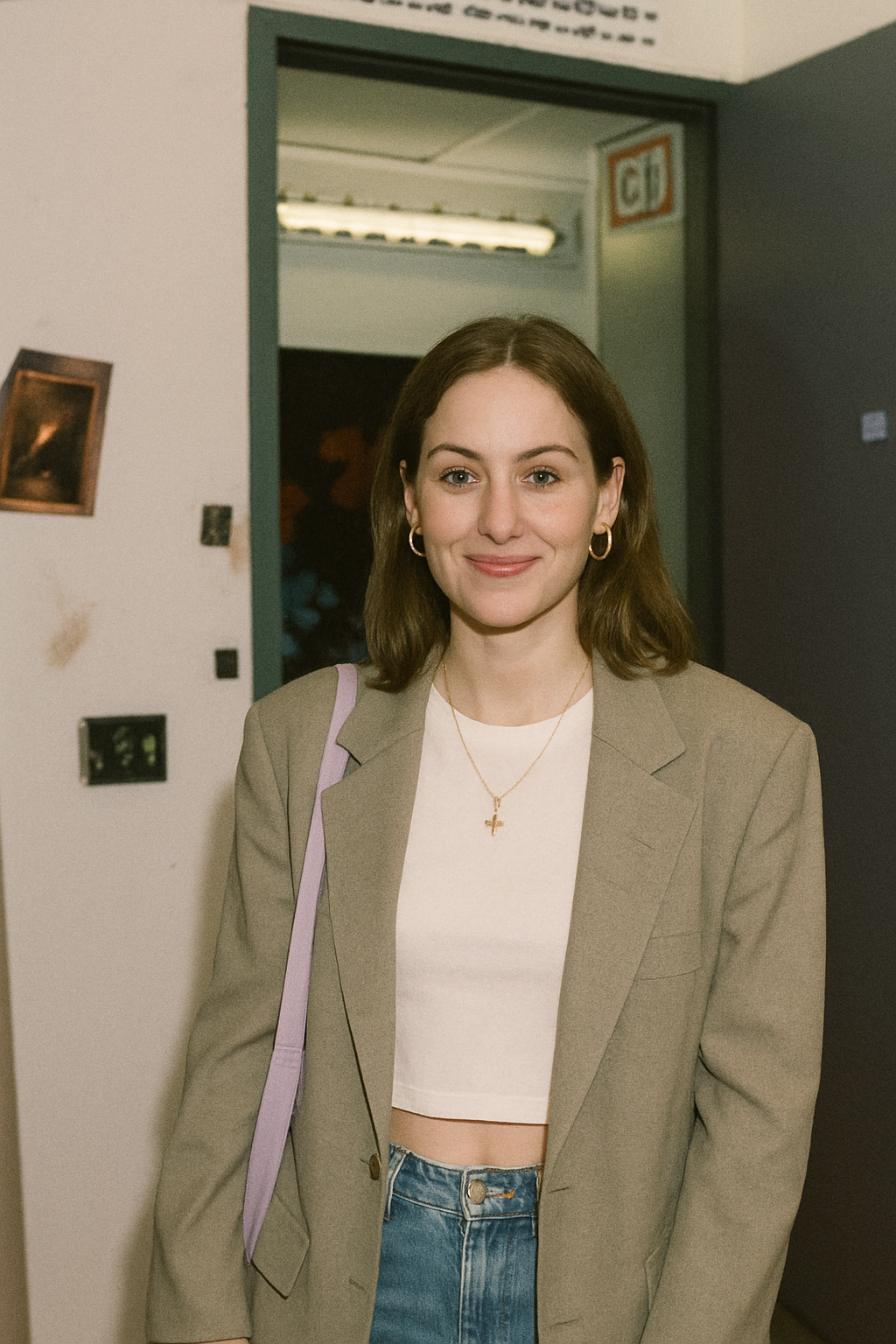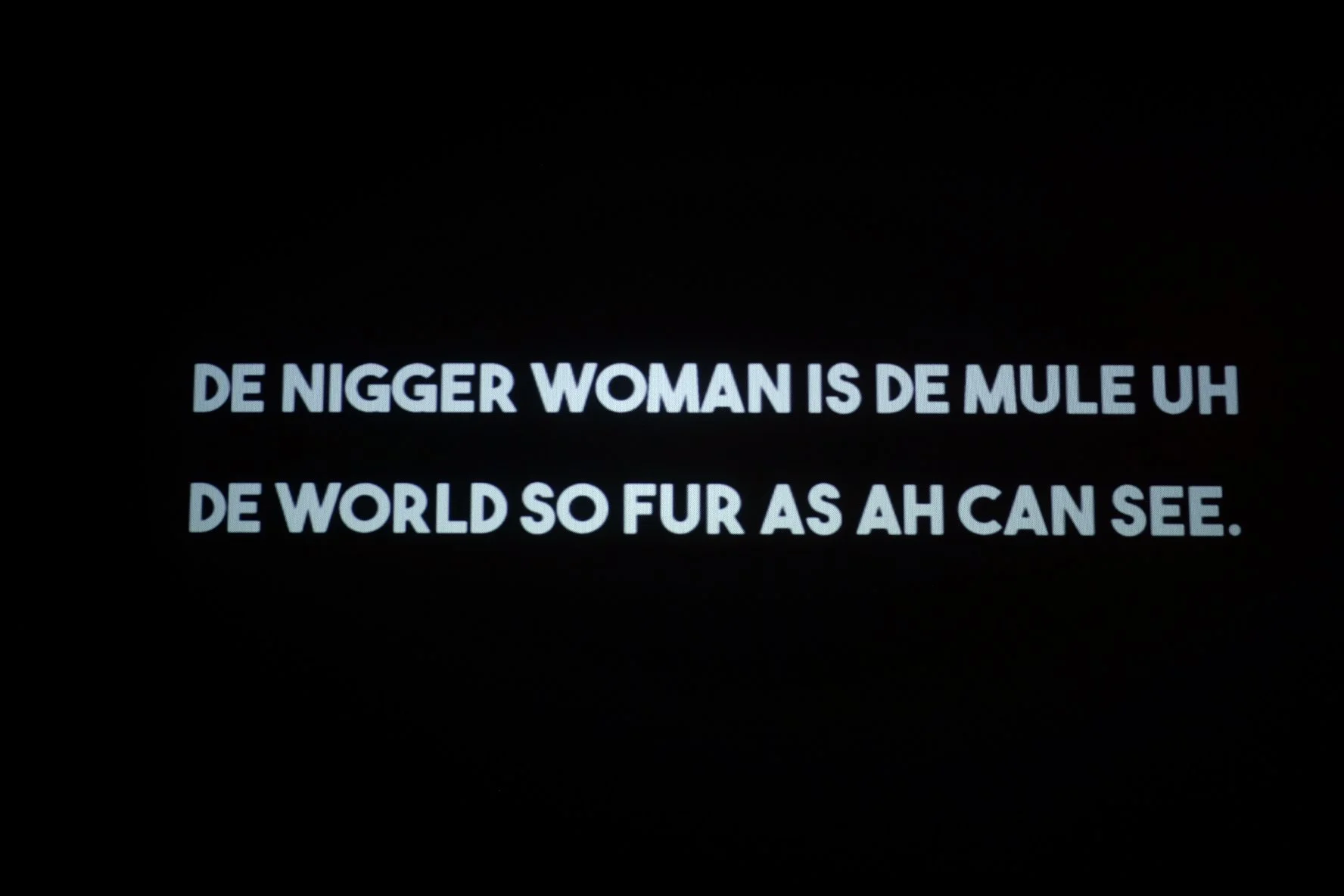Performance
White Woman, Online
2025
Performance, screenshot documentation, AI studies
A performance that examines how whiteness, Christian femininity, and desire operate inside a conservative dating platform. Over the course of nine days, the length of a Catholic Novena, I entered the space as “Grace A.,” a soft, white-coded Catholic woman whose presence was shaped not through acting or seduction, but through simple participation. On the profile itself, I used a single photograph of myself with the contrast slightly raised, alongside supplemental images relating to the Catholic faith. The work is not about building relationships or creating fantasy. It is about documenting how whiteness functions as a pre-existing script, and a template men immediately recognize and respond to. Most conversations were shallow, polite, and directionless, revealing how little is required of white femininity beyond availability and emotional ease. A few conversations moved instantly toward marriage and children, exposing the platform’s deeper ideological stakes, which are the expectation that a “good Christian woman” is a future wife, mother, and signifier of morality before she is even a person.
Before opting to edit my own photo, I asked AI tools to generate images for the Grace persona. The prompt I gave was ‘keep this photo the same but make me look lighter’, and the outputs repeatedly altered me completely, including changing my layered necklaces into a cross on a single chain. These corrections became part of the work, and show how the machine imagines whiteness and Christian womanhood as intertwined ideals. The AI did not create Grace, but it revealed the cultural logic that makes her possible.
The performance is documented only through screenshots. No narrative, no performance voice, no confession. Just evidence of how the system reacts to a woman who fits a template of whiteness, purity, and safety. What emerges is not a story about connection, but a portrait of projection, and men engaging with an idea they came in already holding. The point of the work is to show how little it takes to activate this script, and how deeply whiteness and Christian femininity continue to shape desire, trust, and fantasy in digital space. White Woman, Online is not about becoming white, but rather what the world does when it thinks you are.
Grace A. dating profile
Grace A., as imagined by AI (Triptych)
Grace A. AI ‘Lightening’ prompt Studies
The 8 White Identities, and You!
2024
In this performance, I assumed the role of a secretarial figure tasked with “surveying” participants. The space was staged as an office, where visitors waited their turn to meet with me. Adopting a subservient and unassuming persona created a sense of ease that encouraged participants to speak openly when confronted with challenging questions. Their responses were used to position them within the hierarchy of white supremacy as defined by the 8 White Identities, a framework developed by Dr. Barnor Hesse, Associate Professor of African American Studies, Political Science, and Sociology at Northwestern University.
By embodying a figure historically associated with both service and gatekeeping, the work examined how power circulates through everyday roles and how racial identities are disclosed, performed, and measured within those dynamics.
Images courtesy of Veronica Rae Photography
Call Me If You’re Looking For Love
2022
An in-process public art/performance piece where the audience is invited to engage with me anonymously using a toll free number. This work functions as an exploratory survey of our motivations for reaching out to a stranger, and encourages connections using more traditional modes of direct advertising. This project began in Pittsburgh, and recently expanded to Greenpoint, Brooklyn. Call Me If You’re Looking For Love is currently on hold.
Image courtesy of SaveArtSpace
……as if to a lover
2022
An exploration of love and intimacy as performance, presented in a public setting. I staged a bed in Market Square and read to participants from bell books “All About Love: New Visions”. My aim with this performance was to cultivate a sense of community with the people who congregate there, share moments with them, and offer a gesture of care to strangers, because love is an action. By performing a labor of love, I hoped to use this piece to foster a community of love, and give to others what I wish to receive.
Images by Zim Syed
Most Livable City
2022
2019’s Pittsburgh’s Inequality Across Gender and Race is a research study that affirms how Pittsburgh is one of the worst cities in the country for health and economic outcomes of Black women. For this durational performance, I read this report in its entirety while balancing a steel beam across my shoulders. This act of labor and endurance is a reference to what Black women in this city have to fight against everyday; marginalization, racism, lack of opportunities, and discrimination. The usage of a steel beam is an obvious allegory to Pittsburgh’s title of the Steel City, but also functions as a more indirect reference to its reputation as the “Most Livable City”, a reputation that has historically excluded Black populations.
images courtesy of Associated Artists of Pittsburgh
How Many Drops?
2019
Whiteness, or proximity to whiteness, is the basis of racialized privilege. Being the mother of a child who is one-fourth Black, racial dynamics are often at the forefront of our conversations. My child identifies loosely as mixed race, but his phenotype is more aligned with whiteness, and he presents as a white person. In this performance, I placed drops of my own blood into bowls of milk. Throughout my practice, which centers on questions of identity, I often examine Blackness, it’s lived experience, its representations, and, in this piece, visual politics as they are perceived in relation to lighter skin. This work surveys the historical and ongoing construction of race in the United States, particularly through the lens of the one-drop rule. Once used as a legal and social framework for racial classification, the rule held that any trace of African ancestry—“one drop of blood”—defined a person as Black. Emerging from the logic of slavery, it was a mechanism to police racial boundaries, enforce white supremacy, and deny rights to those of African descent.
By using my own blood as material, I frame the body itself as evidence and invite reflection on the following questions:
How do appearances compare to lineage?
How many drops of blood does it take before we perceive whiteness as diluted?
What does it mean to revisit the one-drop rule in a contemporary context, when the legacies of these definitions still shape our sense of belonging and identity?
Flow State
2018
This staged hair-braiding performance took place in the Forum Gallery at the Carnegie Museum of Art. It centered on Black womanhood and the rituals of care and intimacy embedded in the act of braiding hair. By bringing this practice so often confined to domestic and communal spaces into a major art institution, the performance challenged the boundaries of what is recognized as cultural labor and as art. The piece also confronted the history of exclusion within museums, spaces that have long marginalized Black artists and audiences. By occupying the gallery with a practice rooted in Black tradition and everyday life, the performance asserted presence and belonging. It reframed the museum not as a ‘neutral’ container for culture, but as a site where power is negotiated, and where gestures as personal as hair braiding can become acts of resistance and reclamation.
Shade Compositions
2018
An ongoing performance project created, composed, and conducted by Rashaad Newsome, which explores the complexities of social power structures, and questions of agency. In this performance, which took place in partnership with the Andy Warhol Museum, Newsome lead an ensemble of Pittsburgh-based self-identifying Black female and femme performers, whose individual voices and gestures are synthesized to form improvisatory orchestral music.
Images by Rashaad Newsome Studios
Eternity/Exhaustion
2017
.In this performance, I examined the intertwined realities of labor and the persistent violence inflicted on Black and trans women. For four and a half hours, I scrubbed the floor of the former Melwood Screening Room in Pittsburgh, PA, an act of physical endurance and caretaking often relegated to women, particularly women of color. As I worked, images of Black and trans women who were victims of homicide played on a continuous loop, alongside a quote from Zora Neale Hurston’s Their Eyes Were Watching God. The piece sought to honor these lives, while drawing attention to how their labor and humanity are so often rendered invisible. The repetitive act of scrubbing became both memorial and protest, and a reminder of how histories of servitude, erasure, and violence persist in the present.





























